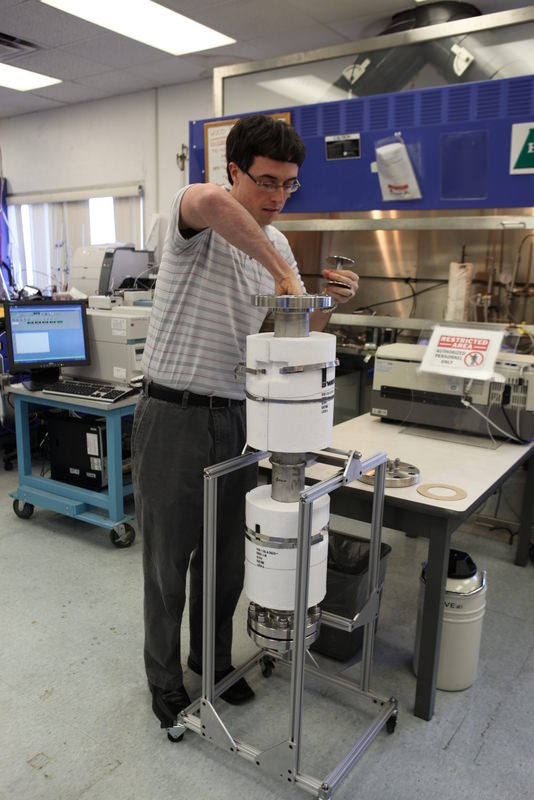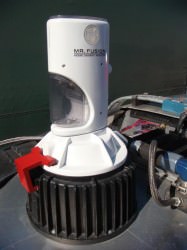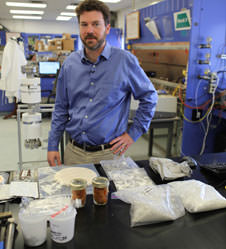Researcher Stephen Anthony works with the new reactor prototype that could turn trash into gas. Image credit: NASA/Dmitri Gerondidakis
It probably won’t be able to fuel Doc Brown’s flux capacitor on his DeLorean time machine, but NASA researchers are hoping a new device that will be tested on the International Space Station can turn trash into power. The Trash to Gas Reactor is a miniature version of large waste incineration facilities on Earth that generate electricity or fuel. This could help with the accumulating trash on the ISS and be used on future missions beyond Earth orbit, as well as help the trash problem in areas of the world where there are neither large power plants nor garbage processing facilities.
“Not only will the effort on this help space missions but also on Earth because we have enough problems dealing with our own trash,” said Anne Caraccio, a chemical engineer working on the project.
The prototype of the Trash to Gas Reactor is a meter-long (3 foot-long) device that looks strikingly similar to the “Mr. Fusion” reactor in the second “Back to the Future” movie. Just like Doc Brown and Marty, astronauts can throw in things like food wrappers, used clothing, food scraps, tape, packaging and other garbage accumulated by the crew and the reactor will turn it into potential power, such as methane gas, or even oxygen or water.
The team developing the reactor is hoping to have their prototype ready to fly on the ISS by 2018 – which unfortunately doesn’t fit into the “Back to the Future” timeline: Emmett Brown travels to 2015 where he gets his Mr. Fusion and changes the future. But perhaps its Earth-bound counterpart could be ready in two years, in time for the Doc’s arrival from 1985.
“Back to the Future’s” Mr. Fusion. Via Theme Park Review.
OK, back to reality now, even though this does have a science fiction element to it…
A team led by Paul Hintze at the Kennedy Space Center has built an 80-pound small reactor to test theories about incinerating a variety of trash ranging from used clothes to uneaten food. The reactor holds more than three quarts of material and burns at about 1,000 degrees F, about twice the maximum temperature of an average household oven. It’s expected to take astronauts four hours to burn a day’s worth of trash from a crew of four.
The team estimates that during the course of a year in space – one half the length of time a mission to Mars is expected to take – trash processing for a crew of four would create about 2,200 pounds of methane fuel, enough to power a launch from the lunar surface, Hintze said.
“The longer the mission, the more applicable this technology is,” Hintze said. “If you’re just doing a two-week mission, you wouldn’t want to take along something like this because you wouldn’t get anything out of it.”
Converting garbage into fuel also would keep astronauts from turning their cramped space capsule into an orbiting landfill.
Paul Hintze is the researcher leading the trash-to-gas project at NASA’s Kennedy Space Center in Florida. Image credit: NASA/Dmitri Gerondidakis
The experimental version of the reactor is made of steel, but the team expects to employ a different alloy for future versions, something that might be lighter but just as strong in order to withstand the high temperatures needed to break down the materials and destroy potential microbes.
One of the issues the team is working on is making sure that no smell or potential hazardous gases are created as a by-product in the closed environment of the space station or a spacecraft on its way to deep space.
“On Earth, a little bit of an odor is not a problem, but in space a bad smell is a deal breaker,” Hintze said.
Right now trash in the ISS is stuffed into the Progress resupply ship, which burns up in the atmosphere during re-entry. This new reactor could turn the trash into something valuable in space.
Source: NASA



